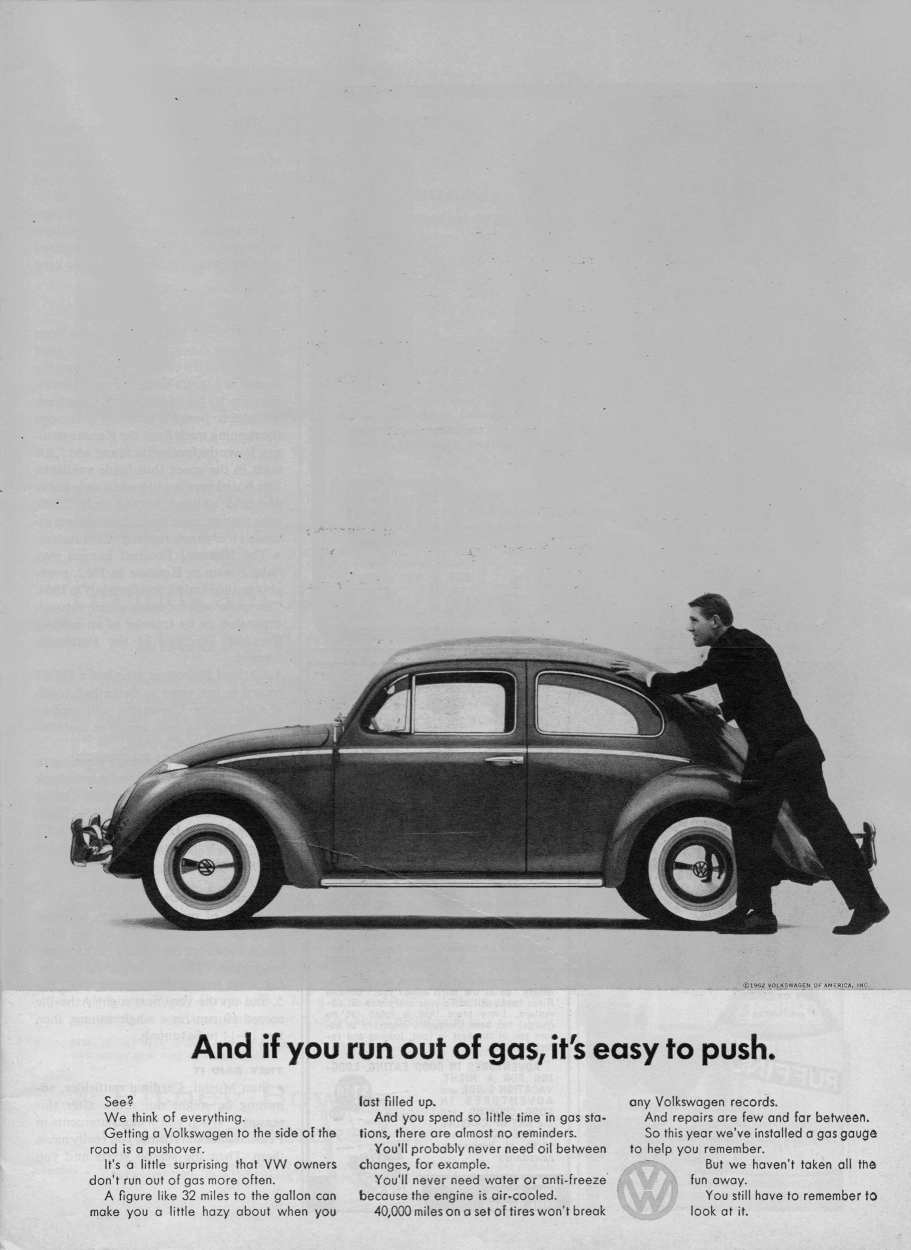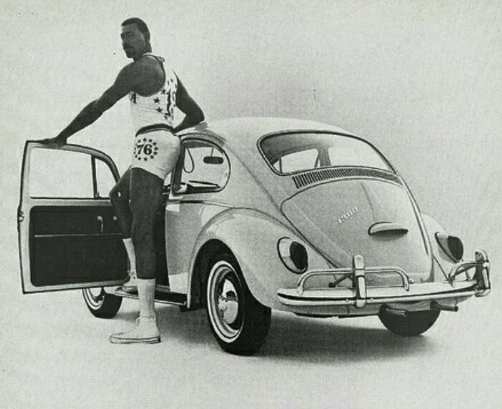Often, small businesses focus on the positives and ignore the negatives, hoping that the customer will not notice their shortcomings. However, a strategy of ignoring what your customer likely already knows can be a costly mistake. Good marketers know that they have to look at ways to turn a business negative into a positive and present any negative attributes of their product or service into something that their prospects will value. Consider the following example.
Back in 1955 Volkswagen, or VW, entered the US market in earnest. However, the beetle bug had many disadvantages. It was slower and less appointed then the competition. In fact, many Americans in the 1950s still had a bad taste for anything German when the beetle bug was introduced to the American public.
VW marketing chose to not focus on its German engineering roots, but directly focus on its shortcoming, particularly its small size. Rather than hope that prospects would not notice, VW launched its “Think Small” campaign that focused on the small size of the beetle bug.
Related Post: The Art Of One-Downing The Competitions to Improve Sales.
A famous ad in the “Think Small” campaign showed basketball great Wilt Chamberlain attempting to get into a VW which poked fun at its size. However, their marketing went on to make the following point-with its small size, the beetle bug was easier to park.
Rather than make excuses or ignore its lightweight construction and small motor, VW translated their shortcomings into a message that it was lightweight and its small motor translated into having great gas mileage. Having a small, air-cooled engine was translated into being easy to service and maintain.

VW chose to take a completely opposite approach to what the competition was doing. Instead of promoting bigger, faster, and more luxurious vehicles, they shifted the narrative to taking features that many would consider inferior and translate them into positives. Any insult to the brand was flipped into a compelling benefit.
VW was also the classic underdog. In the 1960s, an anti-establishment movement was taking hold and the big brands were associated with the establishment, while VW played the “We are not Like the others” mindset which demonstrated that they were the anti-establishment alternative to the big three automakers of the day.
Good marketing can take a lesson from VW who took their negatives and turned them into positives and defuse bad initial impressions.
For example, if your business uses an old ugly looking truck as its fleet vehicle, some prospects might take that in a negative light, believing that you don’t have much business to support having a new vehicle. Instead of ignoring this negative, a good marketing person would say “We drive ugly old trucks so we can keep our prices low to our customers”
If you’re a young college graduate with little real-world experience, you might turn that negative into a positive by saying “Having recently graduated from college, I’m equipped with the newest and latest
Good marketers do not follow the crowd. Instead, they look for a fresh new idea. If the competition is touting their lower price, a good marketer would not try to match the competition on price. Instead, they might focus their marketing on how a lower purchase price is a “first cost”, and that as a savvy consumer, the buyer should be focused on “lifetime value”.
For example, if you are selling boots you might say “A cheap pair of boots may cost you less today, but they wear out quickly and will need to be replaced often. While our boots will cost you more initially, they will last you much longer, making your cost of ownership much less in the long run.”
How can you turn a business negative into a positive and make your negatives appear as positives to your prospects?












